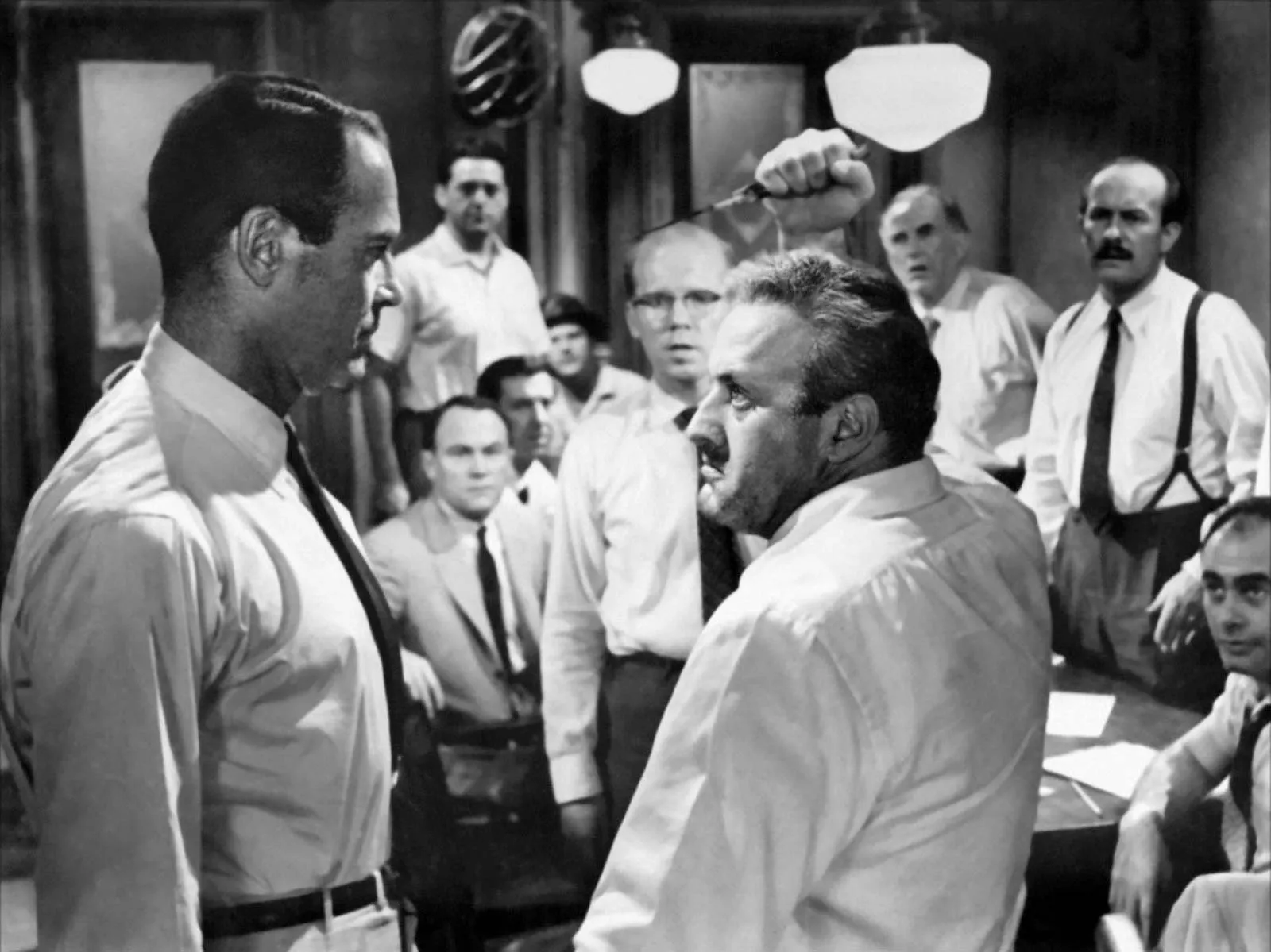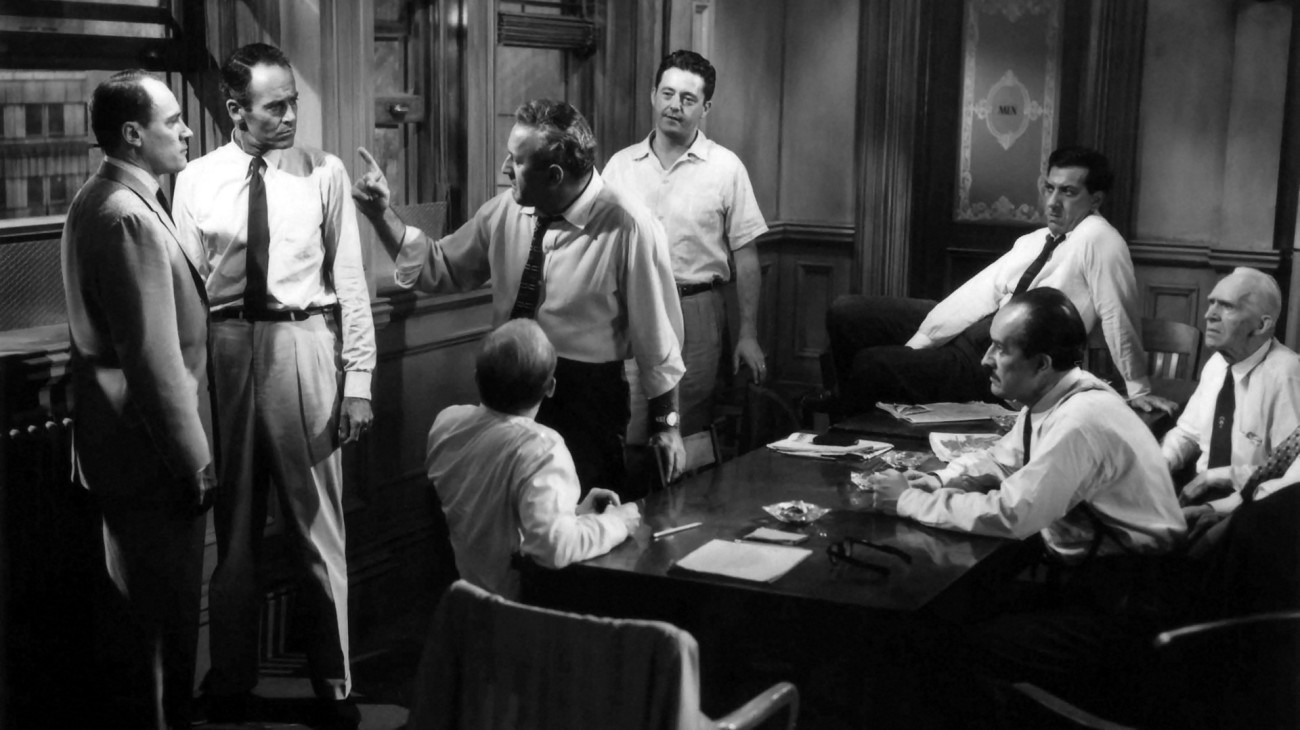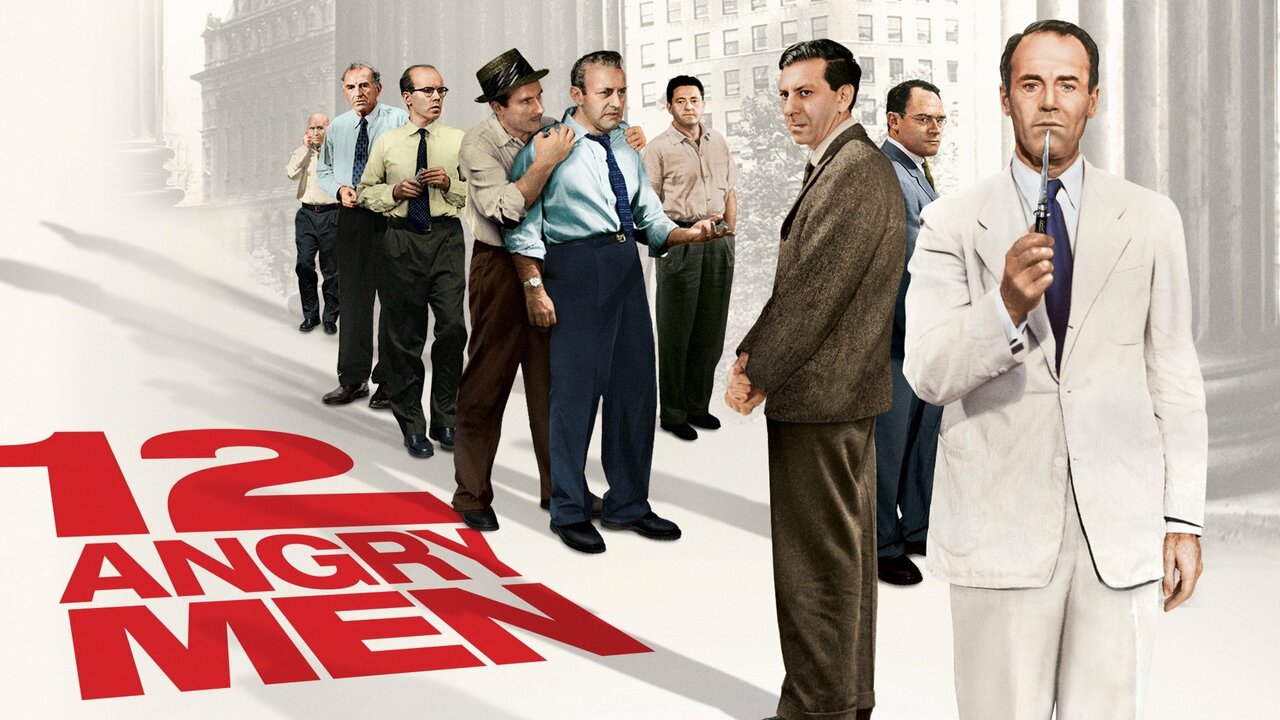12 Angry Men is a courtroom drama that unfolds in a single deliberation room, showcasing the tense discussions of a jury deciding the fate of a young boy accused of murder. Adapted from Reginald Rose’s 1954 teleplay, the movie follows Juror 8 (Henry Fonda) as he questions the evidence and slowly persuades the others to reconsider their initial guilty verdict. While the story appears straightforward, its themes of justice, bias, and human nature add significant depth.
As the jury begins its deliberation, nearly all members vote guilty, believing the prosecution’s evidence is compelling. However, Juror 8 dissents, not because he is certain of the boy’s innocence, but because he believes the case lacks absolute certainty. His stance creates immediate tension, particularly as he introduces the concept of reasonable doubt. The sweltering heat and personal biases of the jurors further exacerbate the situation, setting the stage for a dramatic debate.
One of the most compelling aspects of 12 Angry Men is its refusal to provide a definitive answer regarding the boy’s guilt. By the end of the movie, the jurors reach a unanimous “not guilty” verdict, but the audience is never given confirmation that the boy is truly innocent. This lack of closure is intentional; the film’s core message is not about solving the crime but about ensuring justice is served without personal prejudices clouding judgment.

Juror 3’s Transformation: Personal Pain, Bias, and the Pursuit of Justice
Juror 3 (Lee J. Cobb) is the most adamant in his belief that the boy is guilty, motivated by his own strained relationship with his son. His refusal to consider alternative perspectives stems from deep-seated personal pain rather than objective reasoning. In an emotional climax, he breaks down after tearing a photograph of his estranged son, finally realizing his judgment was clouded. This moment highlights how personal experiences shape our perceptions of justice and guilt.
The sweltering heat in the jury room is more than just an environmental detail—it is a symbol of the rising tension and discomfort among the jurors. The oppressive temperature mirrors their internal struggles and frustrations. When the vote reaches a 6-6 split, rain begins to pour, signifying a shift in their collective mindset. This cooling effect reflects the gradual calming of emotions as the deliberations move toward rational discourse rather than heated arguments.
At the end of the film, Jurors 8 and 9 exchange names, a seemingly small but symbolically powerful gesture. Throughout the deliberation, the jurors remain anonymous, representing how easily people can hide behind their roles and biases. By sharing their names, these two men acknowledge their shared humanity, setting them apart as individuals who sought truth and fairness rather than blindly following the majority.

Confronting Prejudice and Justice: The Lasting Impact of 12 Angry Men
The 1997 adaptation of 12 Angry Men stays true to the original but introduces notable differences, particularly in the characterization of Juror 10. In the 1957 version, his bigoted speech is met with silent rejection as jurors turn their backs on him. However, in the remake, the jurors actively push back against his statements, emphasizing a more direct confrontation of prejudice. Similarly, Juror 3’s realization is portrayed differently, with him emotionally comparing himself to the victim rather than destroying a personal photograph.
The film transcends its legal drama framework to explore broader themes of democracy, human nature, and justice. Unlike many courtroom films that focus on proving guilt, 12 Angry Men underscores the necessity of proving innocence beyond a reasonable doubt. It challenges the audience to reflect on their own biases and the impact of mob mentality on decision-making.
While 12 Angry Men is widely regarded as a masterpiece, some viewers question the realism of its ending. Critics argue that people as entrenched in their views as Juror 3 would not change their stance. Others defend the conclusion, noting that personal biases can be overcome when individuals recognize their flawed reasoning. The film’s ending serves as an emotional and intellectual turning point, leaving audiences contemplating the nature of justice and human fallibility.
More than six decades after its release, 12 Angry Men remains a seminal film in cinematic history. Its exploration of prejudice, justice, and moral responsibility continues to resonate with audiences. The film serves as a powerful reminder of the importance of critical thinking and standing against unfair biases, ensuring that justice is never compromised by personal beliefs. Through its masterful storytelling and thought-provoking themes, 12 Angry Men cements its place as one of the greatest films of all time.



